Let’s talk...
About feelings:
we can recall Sugar’s feelings in different situations, and we can ask our child: How did she feel? How did she manage to get the apples and who helped her?
About disagreements: Sugar disagreed with her friend Mina over an apple. We can suggest another ending to their disagreement.We can ask our child: Have you ever disagreed with your friend? How did you overcome it?
About similar situations: Have you ever faced a difficulty? How did you handle it?
About situations: How should we interact with people with special needs?
Let’s enrich our language...
We can look for new expressions in the book and explain them to the child, such as: landed on the ground, the sun was about to set, well-fed, swaying, and others.
Let's communicate...
Words of encouragement: The bird helped Sugar and encouraged her saying: “Don’tworry Sugar, we will find another way. ”We can think with our children about phrases and expressions that can encourage us during difficulties, such as: “You can do it,” “Ibelieve in you,” “What matters is that you keep trying.”
What am I good at? We can draw our child’s hand on paper and think together about characteristics that make them special and skills they are good at, and record them in the hand drawing.
Let's share...
We can prepare food together using apples, such as: cake, pie, juice, or cut up an apple and enjoy eating it together.
Let's practice...
We can train our kangaroo jumps; we can try jumping on one leg, then on both legs, forward,backward, and so on.
Let's research...
We can learn about the kangaroo: What are its characteristics? Where does it live? What does it eat? We might want to draw it and design a pouch for it from paper or fabric.
Let’s talk...
About dealing with differences: We can ask our child: How was Cookie different from her friends? How did she feel? How did she find a solution to her problem?
About dealing with problems: We can our child if they ever felt different or faced a problem because of that difference. What did they do? How did they act? Did anyone support them? How did they do it?
Let’s create...
We can make a shell from household items and embark on different adventures from our imagination, narrating them with our words and movements.
We can ask our child to think of different ways to use various objects-spoon, piece ofcloth, book, pen, shells, and others…
Let’s explore...
We can visit the beach, search for living creatures on the shore, such as: turtles, crabs, seaweed, shells, and others. We can collect shells to make a necklace or picture frame.
Let’s communicate...
Our society includes different people, some of whom face various challenges like visual impairment and limited mobility. We can take our child on a tour around town and look for signs indicating accessibility for people with special needs. We can take pictures of them with our phone camera and talk about them and the importance of accessibility in general.
Let’s talk...
About trying and experimenting: The bear planted seeds that blossomed into similar flowers, except for one plant that didn’t bloom. Nevertheless, he didn’t give up, he took care of it, and provided all the necessary conditions. We can ask our child: Have you ever tried something and didn’t get what you wanted? How did you feel? What did you learn? Did you change something during your attempt, as the bear did?
About differences: Children enjoy planting seeds and observing their growth. This is an opportunity to talk to our child about the conditions for the growth of each type of plant (the amount of water and light it needs) and about what is common and different in the growth of each type.
About different perspectives: We can follow the drawings in the story and compare the rabbits and the bear. We can ask our child what the bear might be thinking about the plant, and what the rabbits might be thinking. Why do they have different ways of thinking?
Let’s enjoy leaning...
Caring for plants requires the ability to wait and to be patient, a skill which our child may still lack. We can support them in developing this skill by agreeing to perform specific daily tasks that suit their abilities, such as watering the plant or measuring its height with a small ruler and marking it. Imagine how happy your child will be when they share in making a healthy dish from vegetables they planted in a pot on the balcony or in a garden bed!
Let’s enrich our language...
In the book, there are two stories happening at the same time. We can enhance our child’s narrative ability by thinking up stories. We can look at the drawings and creatively add alternative endings of our own.
You can go over...
You can go over the book with your children and enjoy looking at its illustrations.
Can you spot...
Can you spot the apple on every page? Some of the objects and animals remain constant, while others change position. Which are constant? Which are in motion?
It is hard...
It is hard for some children to wait until parents finish their tasks, or to wait until play time comes. We can help the children to wait, by using an analog clock with hands. If the children know in advance when their “waiting time” will end, it will help them increase their ability to wait.
Have you noticed...
Have you noticed that the mouse is smiling almost throughout the book? How do you think it feels while waiting patiently?
We all lose...
We all lose our patience at times, waiting on line at the cashier, or getting stuck in traffic. You may like to share an experience with your child in which you finally made it after having waited for something for a long time. What ‘gift’ did you get at the end of the long wait?
You can choose...
You can choose a toy you have, that is from the story, and illustrate what happened to it in the story in front of family and friends.
Let‘s make an apple pie...
Recipe:
3 cups of flour
1 cup of yogurt
2 eggs
200 gr of margarine without salt
1.5 cups of sugar
5 grated apples
- Teaspoon of cinnamon powder
The procedure:
Make a whole in the middle of the flour and place one beaten egg. Add sugar, yogurt, and melted margarine. Mix them all together until it becomes doughy and leave it in the fridge for half an hour.
Divide the dough in half. Flatten one-half into a disk, add the grated apple with cinnamon. Then flatten the other half on the top. Brush the surface of the dough with a beaten egg and bake it. Enjoy!
Let’s talk...
About feelings: We follow the written text and drawings, accompanying the bear on his journey from the forest to the city, and talking about his feelings and thoughts, as well as the feelings of friends and family. We can talk about feelings of loneliness, longing, anxiety, pride, a sense of ability and self-fulfilment as well. Enriching our child’s dictionary so that they can be aware of their feelings and express them while reflecting these feelings through their behaviour.
About perseverance and realization of dreams: After many attempts and for a long period of time, the bear was able to play successfully. With our children, we can share a goal that we have persevered for and achieved, and we can ask them what goal or dream they would like to achieve as well. We then plan together how they can do so.
About their preferences, talents, and abilities: The bear discovered his inclinations and talent for playing. We can talk with our children about their inclinations and abilities and ask them about the things they like and can do. We can support and accompany them to discover them and emphasize them.
Let’s communicate...
We can enrich the experience of our children, and together, we can watch a musical or theatrical performance and talk about it.
Let’s enrich our language...
The story is rich in beautiful and new linguistic vocabulary, such as: aspire; issued; overflowing with happiness; shivering. We can explain these words to our children while reading, and we can talk about them afterwards as well.
Let’s have fun together...
The great Arab musician and composer Omar Khairat succeeded in achieving fame by composing many songs. We can search the web for his songs, and we can listen to them with our children and have fun.
Let’s explore...
With our children, we can search for people who have achieved their dreams (researchers, artists, athletes…). We can explore their childhoods and listen to interviews with them.
With the child...
With the child in the book, we follow the growth process of the sunflower: What helped the seed to grow to become a beautiful flower?
Every seed has...
Every seed has a different growth story. Children enjoy the experience of planting different types of seeds and watching each one grow differently. This is an opportunity to talk with your child about the environment that each seed needs to grow in (such as how much water and light), and about the commonalities and differences among seeds.
Children see...
Children see the high trees and big plants around them. We can explore the source of each plant starting from the seed. It is an opportunity to visit the nearest nursery to learn about different types of plants and trees in different growth level.
A cat and a bird...
A cat and a bird accompanied the girl as she was taking care of the plant. They asked questions, they consulted. Let’s look at our role as parents: do we accompany our child’s exploring, and how?
The protagonist...
The protagonist tells the plant some of her secrets, although the latter does not hear. Does it happen sometimes that we talk to our toys, dog or cat? When does it happen?
Taking care of...
Taking care of plants demands a lot of patience and waiting, something that a 3 or 4 years old child lacks. We can help children develop this ability by making them, with their approval of course, do some daily tasks that fit their abilities, such as watering plants or measuring their height. Children would very happy to make a plate of vegetables from those that they plant themselves.
All creatures grow...
All creatures grow and so do we! We can invite our child to look at his growth process by measuring his height or weight every once in a while, and have a conversation about the factors that cause our body to grow.
The hare was proud...
The hare was proud of some aspects of his personality. We suggest having a conversation about the needs of both adults and youngsters to be proud of some positive aspects of our personality.
The animals described...
The animals described the hare as arrogant. We might talk to our children about the difference between being proud and being arrogant.
The hare was not...
The hare was not so serious during the race. This is an opportunity to talk to our children about the meaning of this behavior.
When the hare...
When the hare reached the finish line, the laughter became louder. We can have a talk about the hare’s feelings in this situation, and ask if he might change his behavior.
Who challenges the hare?...
Who challenges the hare? We can encourage our children to imagine a race between the hare and other animals shown in the story (such as, the squirrel or the mouse), and to ask who is going to win the race, and why.
Read and act...
Read and act out the story. The hare ran quickly, while the tortoise was crawling, or the hare closed his eyes to get some sleep etc.
We can read...
We can read slowly while emphasizing the rhythm in order to expose the children to a poetic way of writing.
We can invite...
We can invite family and friends to arrange a race, in order to experience it.
You can go...
You can go over the book with your children and enjoy looking at its illustrations.
Can you spot...
Can you spot the apple on every page? Some of the objects and animals remain constant, while others change position. Which are constant? Which are in motion?
It is hard...
It is hard for some children to wait until parents finish their tasks, or to wait until play time comes. We can help the children to wait, by using an analog clock with hands. If the children know in advance when their “waiting time” will end, it will help them increase their ability to wait.
Have you noticed...
Have you noticed that the mouse is smiling almost throughout the book? How do you think it feels while waiting patiently?
We all lose...
We all lose our patience at times, waiting on line at the cashier, or getting stuck in traffic. You may like to share an experience with your child in which you finally made it after having waited for something for a long time. What ‘gift’ did you get at the end of the long wait?
You can choose...
You can choose a toy you have, that is from the story, and illustrate what happened to it in the story in front of family and friends.
Let‘s make an apple pie...
Recipe:
3 cups of flour
1 cup of yogurt
2 eggs
200 gr of margarine without salt
1.5 cups of sugar
5 grated apples
Teaspoon of cinnamon powder
The procedure:
Make a whole in the middle of the flour and place one beaten egg. Add sugar, yogurt, and melted margarine. Mix them all together until it becomes doughy and leave it in the fridge for half an hour.
Divide the dough in half. Flatten one-half into a disk, add the grated apple with cinnamon. Then flatten the other half on the top. Brush the surface of the dough with a beaten egg and bake it. Enjoy!
 I Love Apples Too
I Love Apples Too 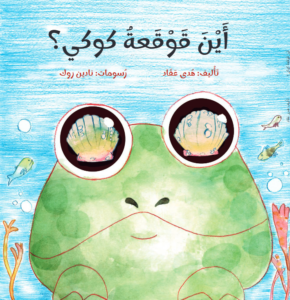 Where is Cookie’s Shell?
Where is Cookie’s Shell? 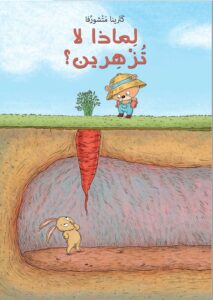 Why Don’t You Bloom?
Why Don’t You Bloom? 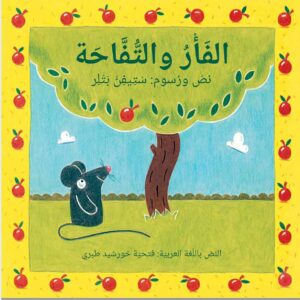 The Mouse and the Apple
The Mouse and the Apple 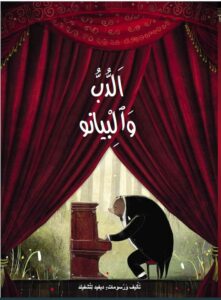 The Bear and the piano
The Bear and the piano 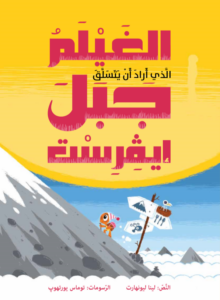 The Turtle Who Wanted to Climb Mount Everest
The Turtle Who Wanted to Climb Mount Everest 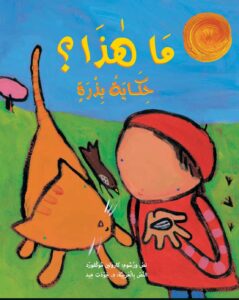 What’s This?
What’s This? 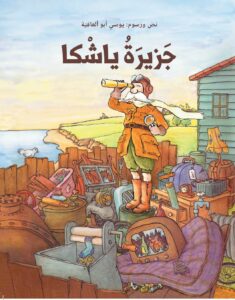 Yashka’s Island
Yashka’s Island 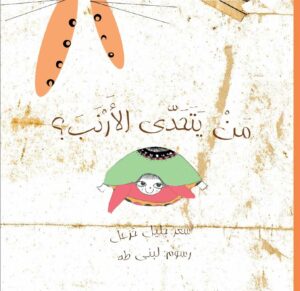 Who Challenges the Rabbit?
Who Challenges the Rabbit? 
